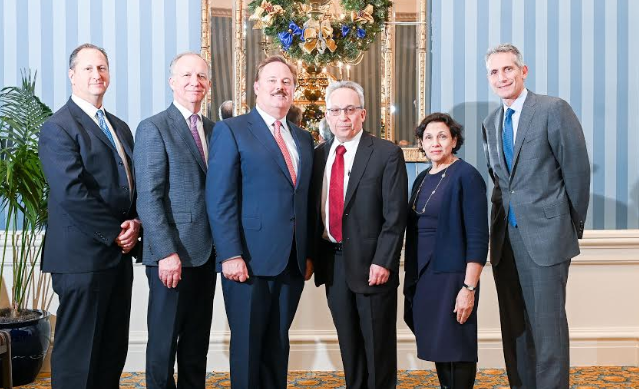
NEW YORK CITY – Suburban office is getting its groove back as Millennial demand for walkable live-work-play amenities spill out into the burbs with an urban core not too far away. Suburban investors showing up to the party are not pressed to glance back at urban investment, especially in states where taxes have increased, and where private and public partnerships are unaligned on social infrastructure, according to panelists at the Capital Markets Symposium sponsored by Transwestern and Real Estate Forum at the Penn Club of New York in Midtown on Dec. 11.
A lot of the movement to the suburbs has been driven by Millennials who do not want to drive and generally do not own cars and prefer flexible transportation options, such as ride-shares, which is beneficial for a transit-oriented development in a suburban setting, according to panelist Nicki Livanos, director of real estate investments at AXA. If it's "close enough to an urban environment, or looks and feels like an urban environment, it is doing fairly well," said Livanos.
Steve Pumper, executive managing partner of Transwestern's Capital Markets and Asset Strategies Group, seconded Livanos' point. "Even in a suburban market where there's light rail, you've seen a positive impact," he said. "Dart has had a positive impact on Dallas."
While all office is not created equal, suburban office that has tended to perform consistently well are creative suburban office properties with walkable retail amenities, and which is why Clarion Partners, an institutional investor in the space, has acquired the asset type and disregarded other variations. "Pure commodity suburban office, we're not interested," said Brian Watkins, managing director at the firm.
Suburban office and what usually checks the box are offices that are not in city centers, but that have its own urban core and amenities, according to Paul Hughson, executive managing director of CIII Capital. "If there are local amenities, I'd view that differently from a suburban office park," he said.
And while suburban office may not be the investor flavor of the day, what's for sure is that the panelists have their eye on specific cities and are steering completely clear from others. States that have high taxes, great diversions between incomes and no public answer to affordability or public and private coordination have been marked an "unfriendly business card," according to panelists.
"We've seen historically that the public answer doesn't generally work, and 'private only' doesn't work," said Livanos. "There has to be some coming together of the two parties to resolve the issue. What you have right now is a fractured process."
For CIII Capital, the company is simply avoiding cities with hugely underfunded pension liabilities. Whereas, panelist Paul Boneham, executive vice president at Bentall Green Oak, said the firm isn't redlining any states but is focused on asset classes. Boneham highlighted that the office asset class has become a bit tricky with managing tenant capital improvements and where office demand is headed. "Every market we look at, the herd is moving on the occupier side," he said.
© Touchpoint Markets, All Rights Reserved. Request academic re-use from www.copyright.com. All other uses, submit a request to [email protected]. For more inforrmation visit Asset & Logo Licensing.







